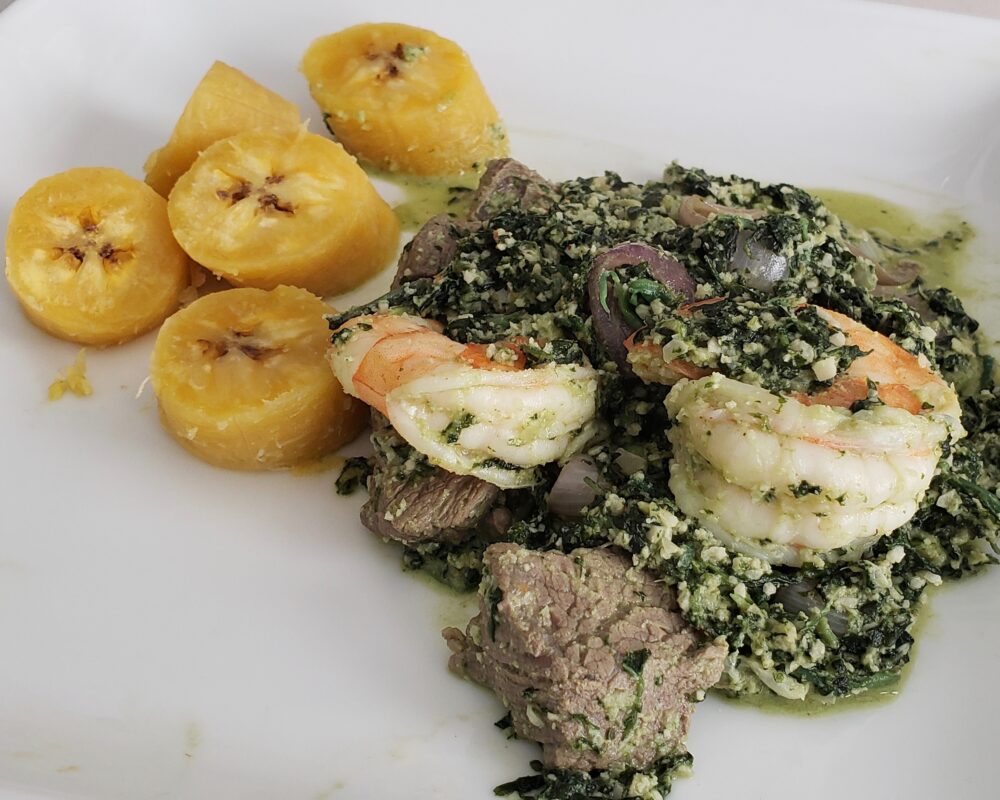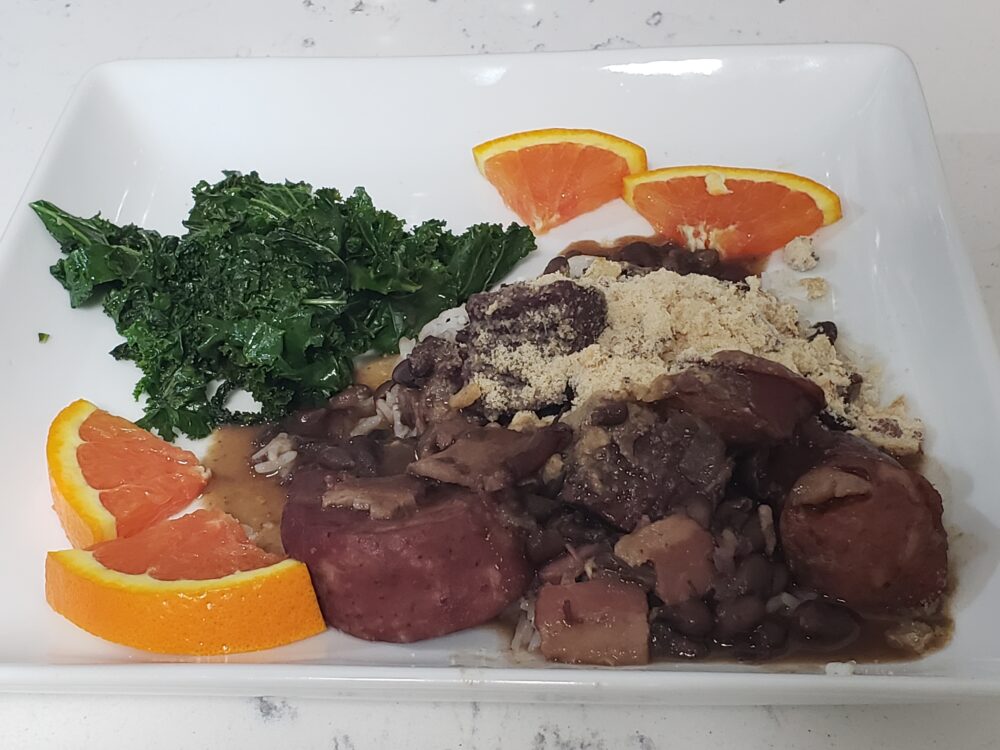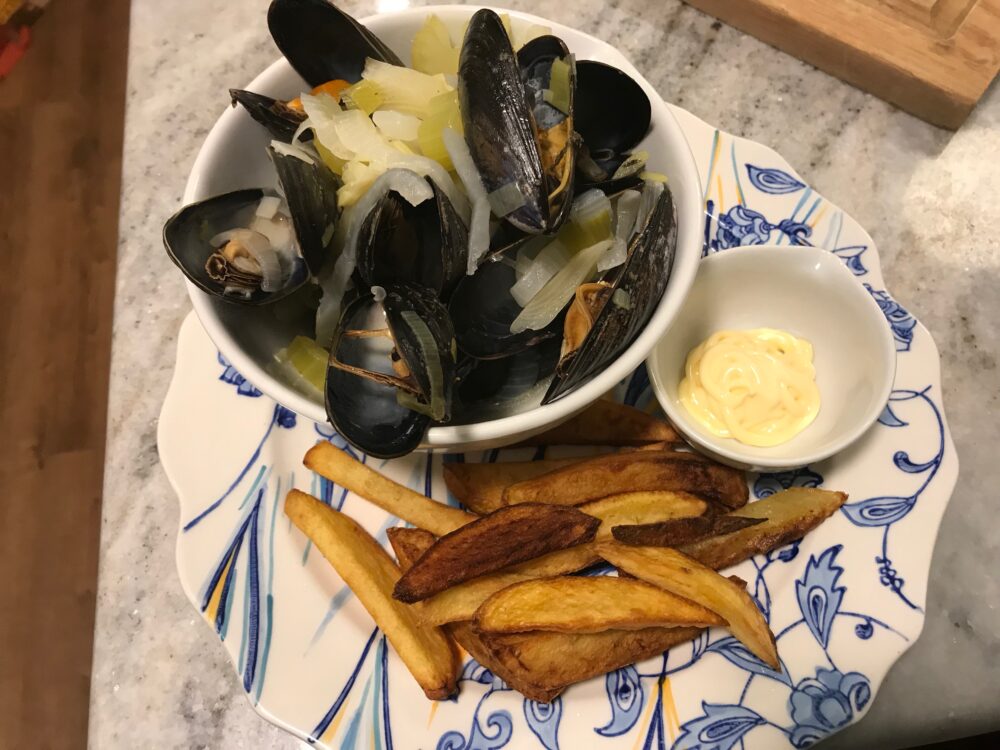What’s new, Argentina? Well, probably lots, but we decided to stay pretty traditional when it came to what to cook this week. Without a doubt, we knew whatever dish we chose from Argentina, it had to have beef as the main component. Beef is perhaps the most important part of the Argentinian diet. It’s almost as important as water or wine or the tango.
Read below to find out how I decided on this week’s dish. But it has beef as the star and features all the fruits and vegetables you could imagine. And it would warm us all up in the event of two feet of snow (which still sits outside as I type this).
THE CUISINE
We think of New York as one of the major melting pots in the world, but I don’t think many people outside of South America understand just how diverse the country of Argentina is. In fact, according to Wikipedia, Argentina has the second largest immigrant population in the world.
The country itself is just about as southern as you can get in the inhabited world. It lies at the southern end of South America right alongside Chile.

Of course, the Native Americans and the Criollos (native born people of Spanish descent) have had a big influence on today’s Argentinian cuisine, but so has just about every immigrant group that has arrived here.
You can see influence from the Spanish, French, German, British, Japanese, Lebanese, Eastern European, and especially the Italians.

Amazingly, over half the population of the entire country has Italian ancestry. That explains why pizza, pasta, and gelato are so popular. You have heard of New York and Chicago pizza, but Argentina has a few of its own distinct pizza styles including something called fugazza (like a focaccia topped with cheese, onions, and olives) and pizza de molde (a thick cheesy dough).
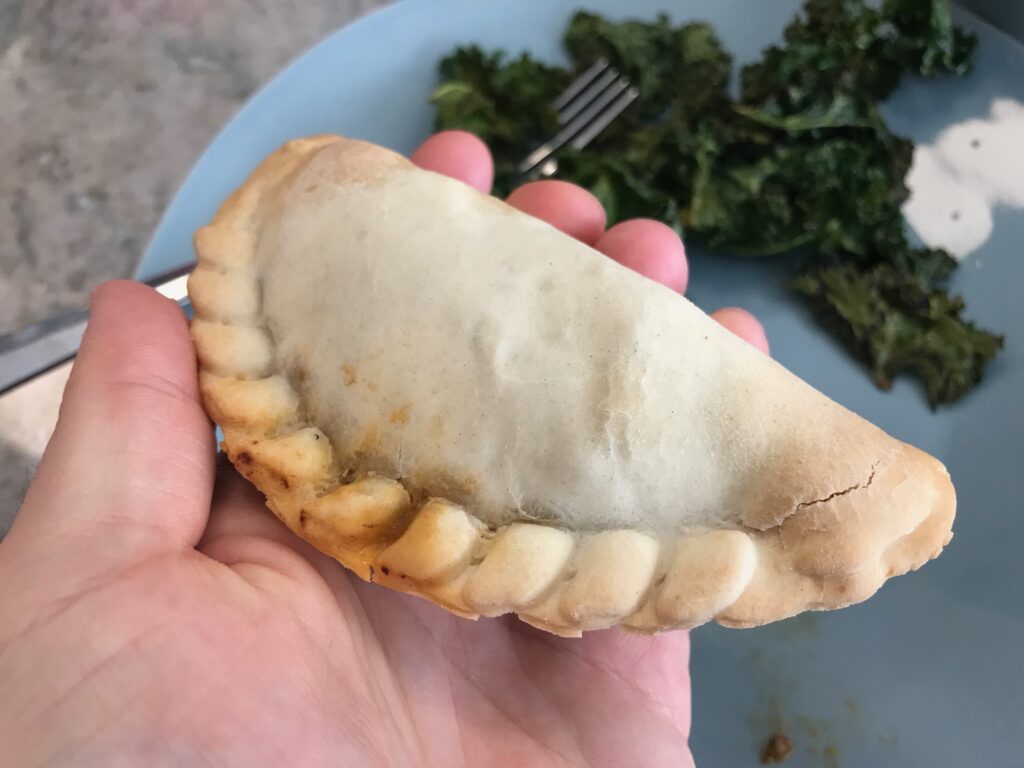
Somewhere in the same universe as pizza are the famous empanadas. These very well could be the national dish of the country and are probably the most famous dish outside of Argentina. These dough pockets are usually stuffed with ground beef and vegetables and can be found everywhere.
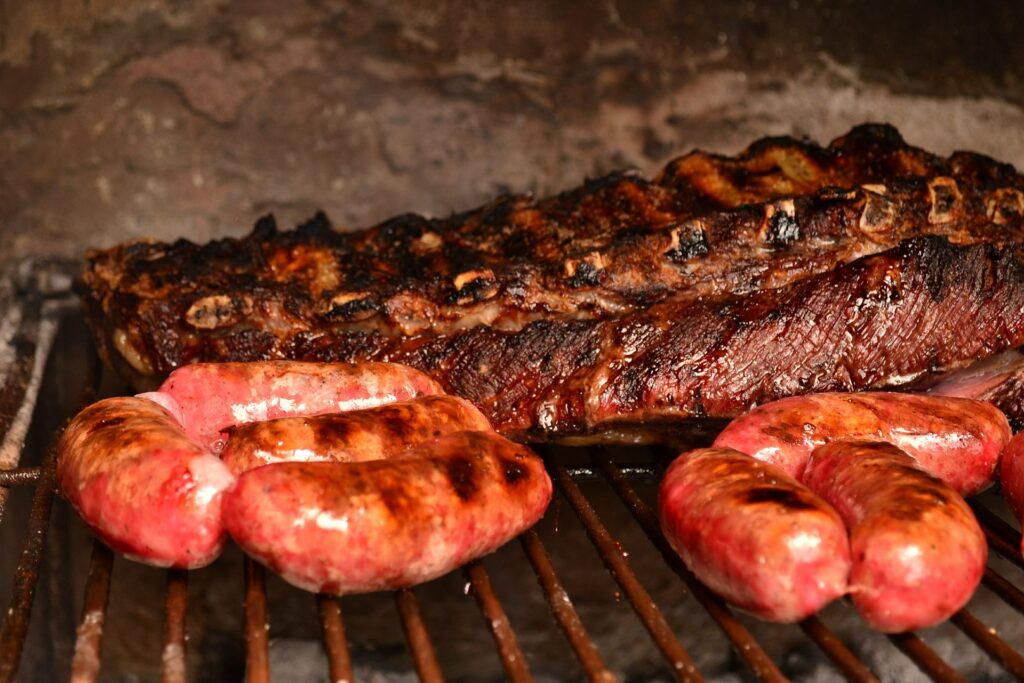
But the actual National Dish is something called Asado. This isn’t really a specific dish but rather a method of preparing meat. Meat, usually beef but also sometimes lamb or goat is barbecued over an open fire. The usual cuts for asado are flank or ribs. Sometimes they’ll throw on a chorizo or blood sausage. I am dying to visit Argentina if just to try a true asado.

Asado became popular with the gaucho, which are essentially Argentinian cowboys. Partly thanks to them, beef is huge in the country and a major export. I read that there are more cattle in Argentina than there are people. If that’s the case, I think we should keep on eating meat.
The most popular sauce for an asado is the famous chimichurri. If you’ve ever been to an Argentinian restaurant you’ve seen this bright green condiment made from parsley, olive oil, oregano, vinegar, and tons of garlic. It’s salty, tangy and herbal and brings an extra zest to a beautifully grilled piece of meat.
This barely scratches the surface of Argentina’s rich cuisine, which is based around meat, grains, and lots of fruits and vegetables.

No post about this country’s cuisine would be complete without a mention of their famous dulce de leche sandwich cookie called alfajor (a cookie that Sam has become somewhat obsessed with).
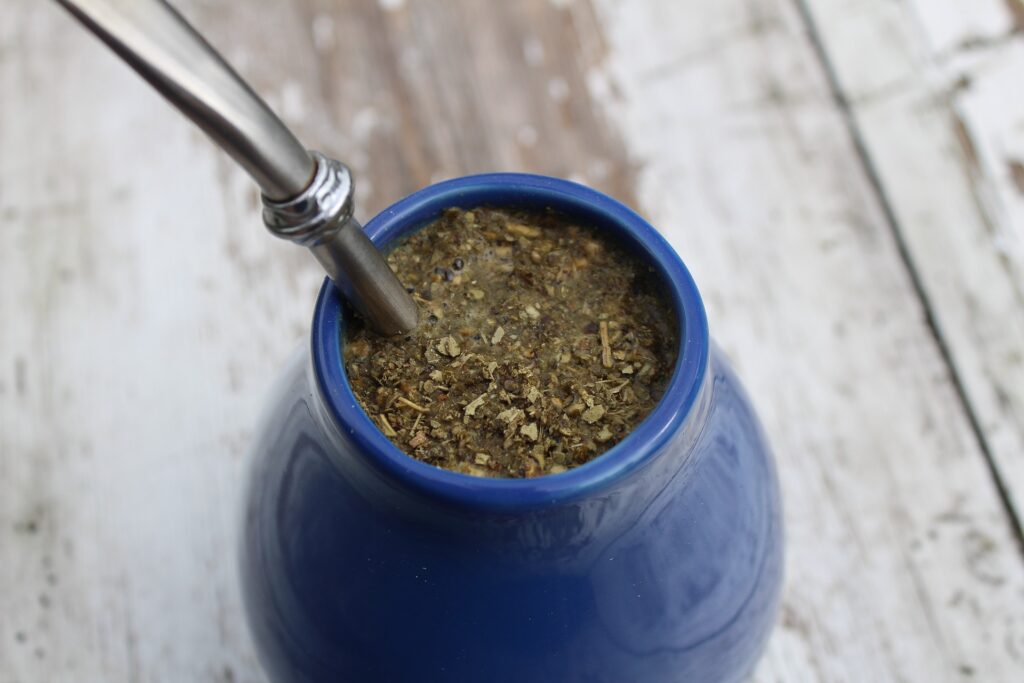
And to wash it all down, you can stick with the herbal and traditional Yerba maté which has almost become a phenomenon in other countries or their rich wine varieties, most notably Malbec, which has certainly caught on! Wine always wins.
ARGENTINIAN FOOD IN NEW YORK

THE VIDEO
Sam has the most fun with these videos when he has a project to do. While most of this dish involved chopping ingredients and adding them to a pot, we found a few things for him to do.
He helped peel a few onions and did a stand up job in scooping the seeds out of the squash. That’s my boy! Check out his skills on the video above.
THE DISH
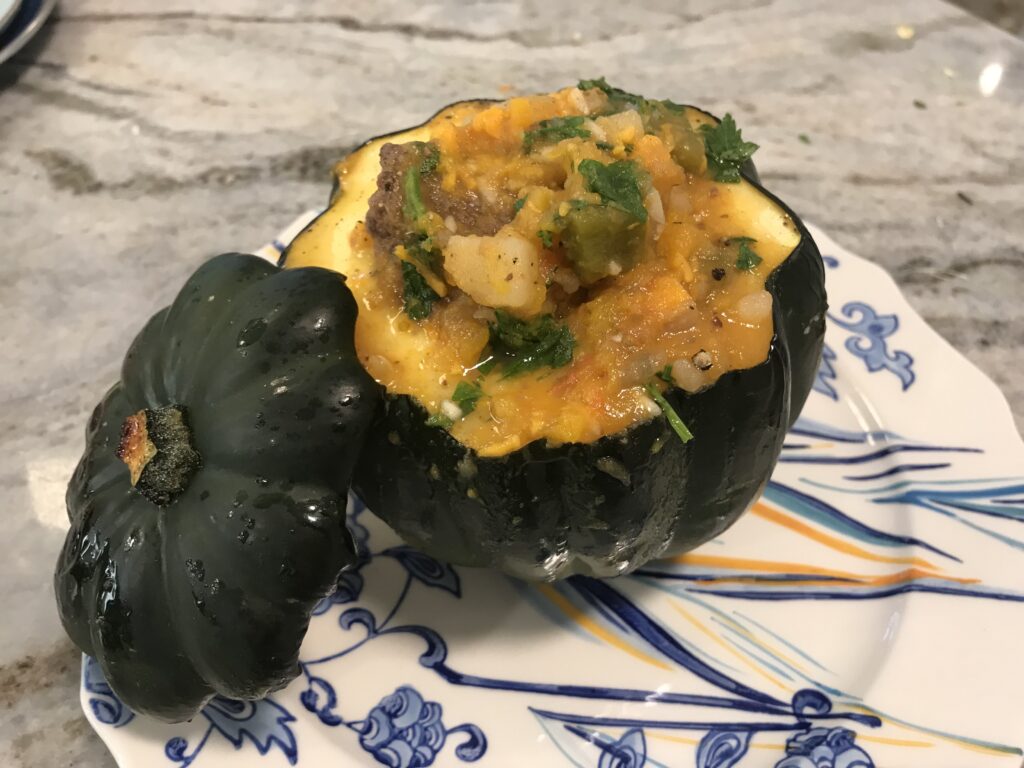
When I decide on a dish for this project, I first look at the country’s self proclaimed National Dish. Then I dig into the most popular and most consumed dishes. In the case of Argentina, neither of those options were going to work out.
Since we don’t own a charcoal (or any type of) grill, I know I couldn’t do the National Dish of Asado justice. I could have broiled a flank steak and topped it with chimichurri, but it just wouldn’t be the same.
Then we came to empanadas. I suppose we could have worked at making the dough and stuffing them, but since I still had some frozen empanadas from the excellent Nuchas, I figure it wouldn’t be necessary to try to re-create something we could try so easily.

And then I read about this intriguing sounding stew. Carbonada Criolla from the Patagonia region. And then I read about how it is sometimes served in a pumpkin and I was just itching to try it.
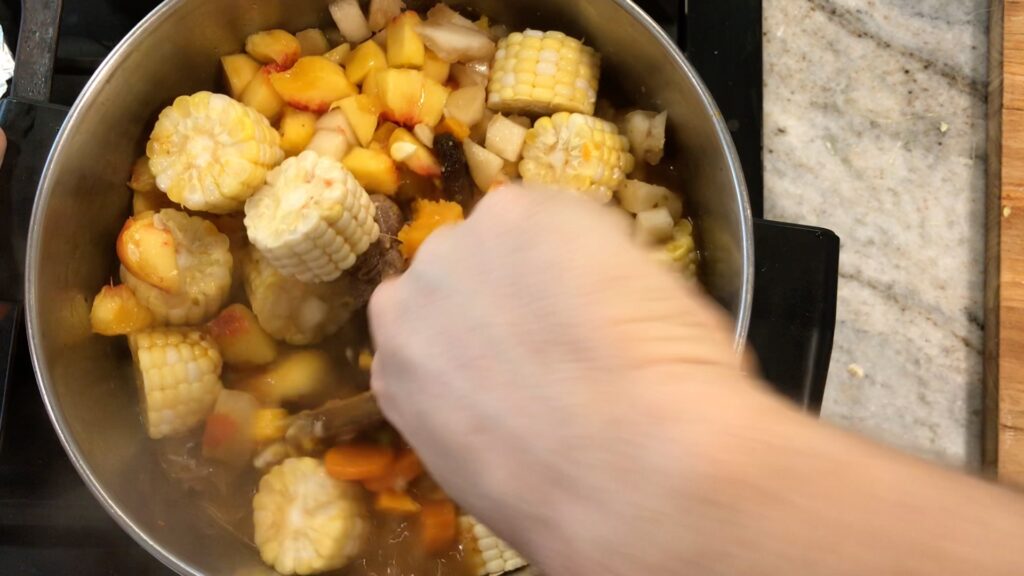
Of course, I cooked this in a big pot and then added the stew to the roasted pumpkin, but traditionally in Argentina the ingredients are added to the pumpkin and then buried in coals until they all turn to ashes. This is where it gets its name carbonada (not from the Italian pasta dish). Carbonizados means ashes.
The Criolla part of the name comes from the native born Spanish people known as Criollos. And then when stuffed into a pumpkin, it’s called Carbonada en Zapallo.
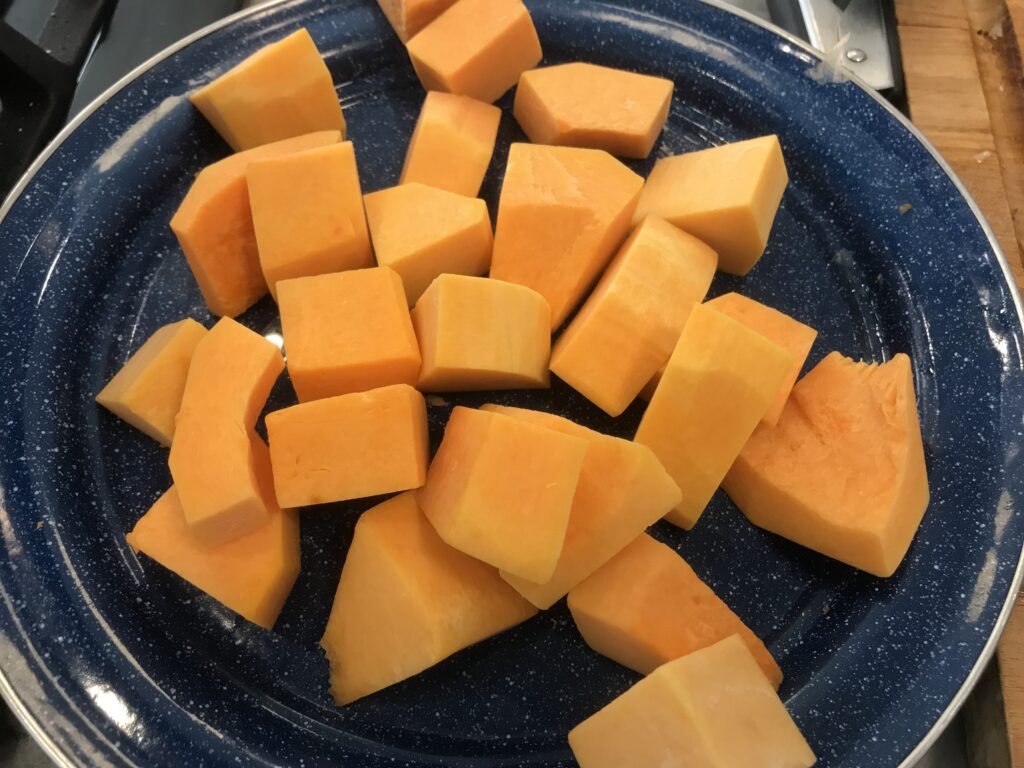
Other vegetables (as you will see in my overloaded recipe) are added and the fruit varies. I’ve seen recipes with only dried peaches and apricots. Others have gone so far as to include fresh grapes, apples, and pears.
Of course, this is not so much an everyday meal in Argentina and is reserved mostly for special occasions. We tend to pick special occasion dishes for our dinners. Every week in this house is a special occasion it seems.
SPECIAL INGREDIENTS
Nothing was too difficult to obtain this week, although not everything was terribly seasonal. Strange to put fresh peaches into a wintery stew. But we managed to hunt everything down.

The biggest challenge was the vessel itself: the pumpkin. A truly authentic Carbonada en Zapallo would be stuffed into a Cinderella or Cheese Pumpkin. We didn’t have access to those, but we did have a smaller Acorn Squash from our local farmer’s market. The size and variety was wrong, but I figured the shape would work. So we went with it.
THE RECIPE
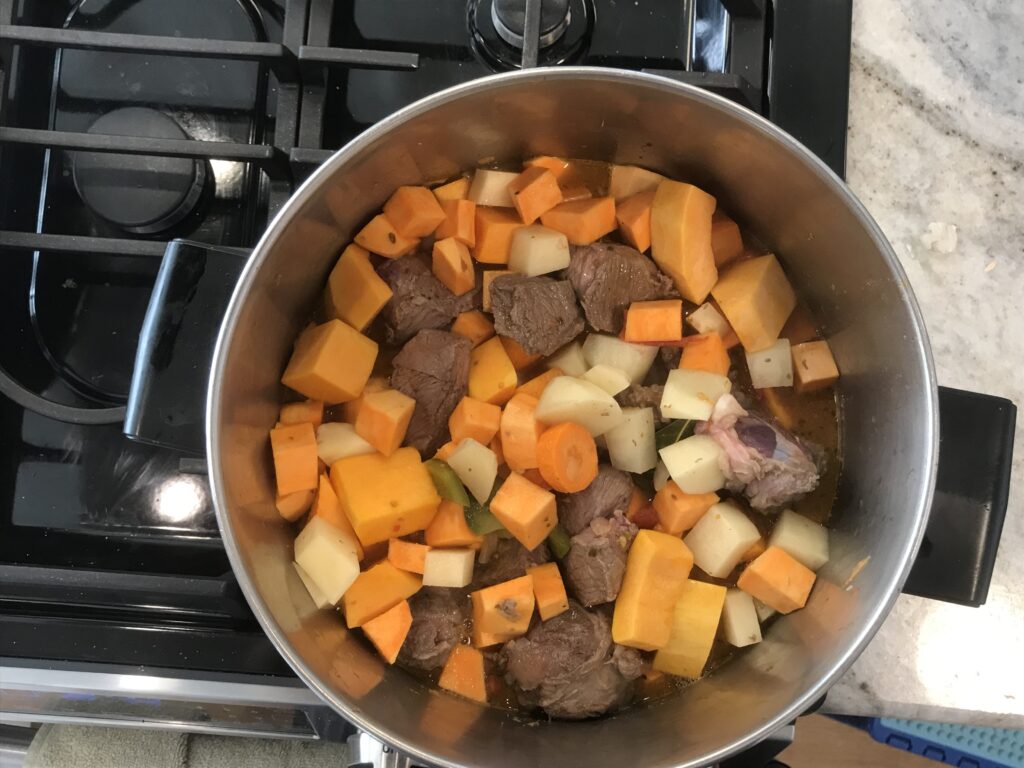
Carbonada is also popular in Uruguay and again, variations abound. But at the heart of the stew is beef, potatoes, corn and fruit. I read other blog posts where people are a bit shocked by the addition of the fruit, but I actually thought it made a lot of sense. Noting better than sweet meat.
Other vegetables (as you will see in my overloaded recipe) are added and the fruit varies. I’ve seen recipes with only dried peaches and apricots. Others have gone so far as to include fresh grapes, apples, and pears.
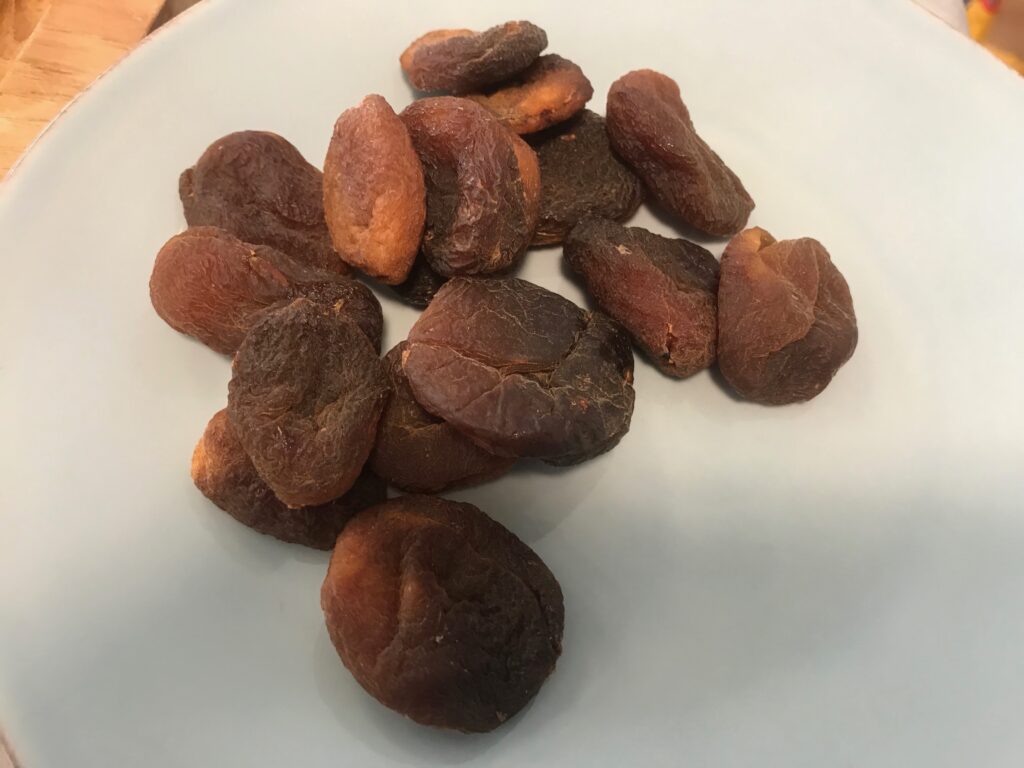
I wanted to try both fresh and dried fruits to see what they did. I cut down a little bit on the amount of each because I didn’t want to make the dish too sweet.
I threw just about everything else I could find into the pot. I assure you nobody went hungry for a few nights.
Carbonada en Zapallo from Argentina

Hailing from the cold nights in the Patagonia region, this loaded sweet beef stew is served many ways, but the most showy is inside a hollowed out roasted pumpkin
Carbonada
- 2 tbspn olive oil (extra virgin)
- 2 pounds beef stew
- 1 white onion (chopped)
- 2 garlic cloves (minced)
- 1 green pepper (chopped)
- 4 tomatoes (chopped)
- 2 bay leaves
- 1 tspn oregano (dried)
- 1 tspn paprika
- 2 tbspn white wine vinegar
- 1 pinch sugar
- 2 cups beef stock
- 1 cup white wine
- 3 potatoes (peeled and cubed)
- 3 sweet potatoes (peeled and cubed)
- 2 cups butternut squash (cubed)
- 1 large carrot (chopped)
- 3 corn on the cob (cut into slices)
- 2 peaches (peeled and diced)
- 1 pear (peeled and diced)
- 1/2 cup dried apricots
Zapallo
- 1 large winter squash (round-shaped like Acorn or Kabocha)
- 1 tbspn olive oil (extra virgin)
Zapallo
-
Preheat oven to 400˚ F.
-
Carefully cut open the top of the squash leaving the rest intact. Scoop out the seeds creating a deep hollow opening.
-
Drizzle with olive oil.
-
Roast squash until tender for about 20-35 minutes depending upon size.
Stew
-
Heat oil over medium high heat. Add beef and brown all over. Remove beef and set aside.
-
Add onions, green pepper, and garlic until soft. About 5-7 minutes.
-
Add tomatoes, oregano, bay leaves, paprika, red wine vinegar, white wine, sugar, and beef broth. Bring to a boil.
-
Add reserved beef, potatoes, sweet potatoes, butternut squash, and carrots. Simmer and cover. Cook on low for about 45 minutes.
-
Add corn, peaches, pears, and dried apricots. Cook for 5 more minutes.
-
Ladle into squash to serve.
HOW I SCREWED IT UP

It was pretty good actually. The meat could have been a bit more tender. I think I needed to cook it a little bit longer and at a lower temperature (again, I have adjusted the recipe above to reflect that).
Eating it out of a solo squash was a bit comical. I felt bad that the others didn’t get their dinner served in a fancy vessel. If we had had a bigger squash, we could have served it in one big one family style. Sam would have loved that (not)!
But flavorwise, it was rich, hearty and the sweetness was present but restrained. I thought this came out nicely and transported us to the wintery mountains of Patagonia.
And it paired very nicely with an Argentinian Malbec. Of course it did.
SAM’S REACTION

He’s still in this phase of wanting everything separated, so the idea of eating the beef with the vegetables and fruit was not going to fly with him.
Once I separated it, he ate the beef and mostly enjoyed it. As you’ll see in the video, he complains a bit about the texture of the meat.
I think I was so self-conscious about the tenderness that I heard him say “It’s too hard” but when I listen back to the video, I think he says “too hot” which is a lot less major of an error.
Either way, he ate most of it happily. And that’s always a win.
NEXT WEEK

We’re doing things a little differently next week. Instead of one main course, we’re going to cook some appetizers called mezze, which is a very popular way of starting a meal in the country of Armenia.
Have you ever tried Argentinian food? What were some of your favorite dishes? Leave comments and thoughts below.



